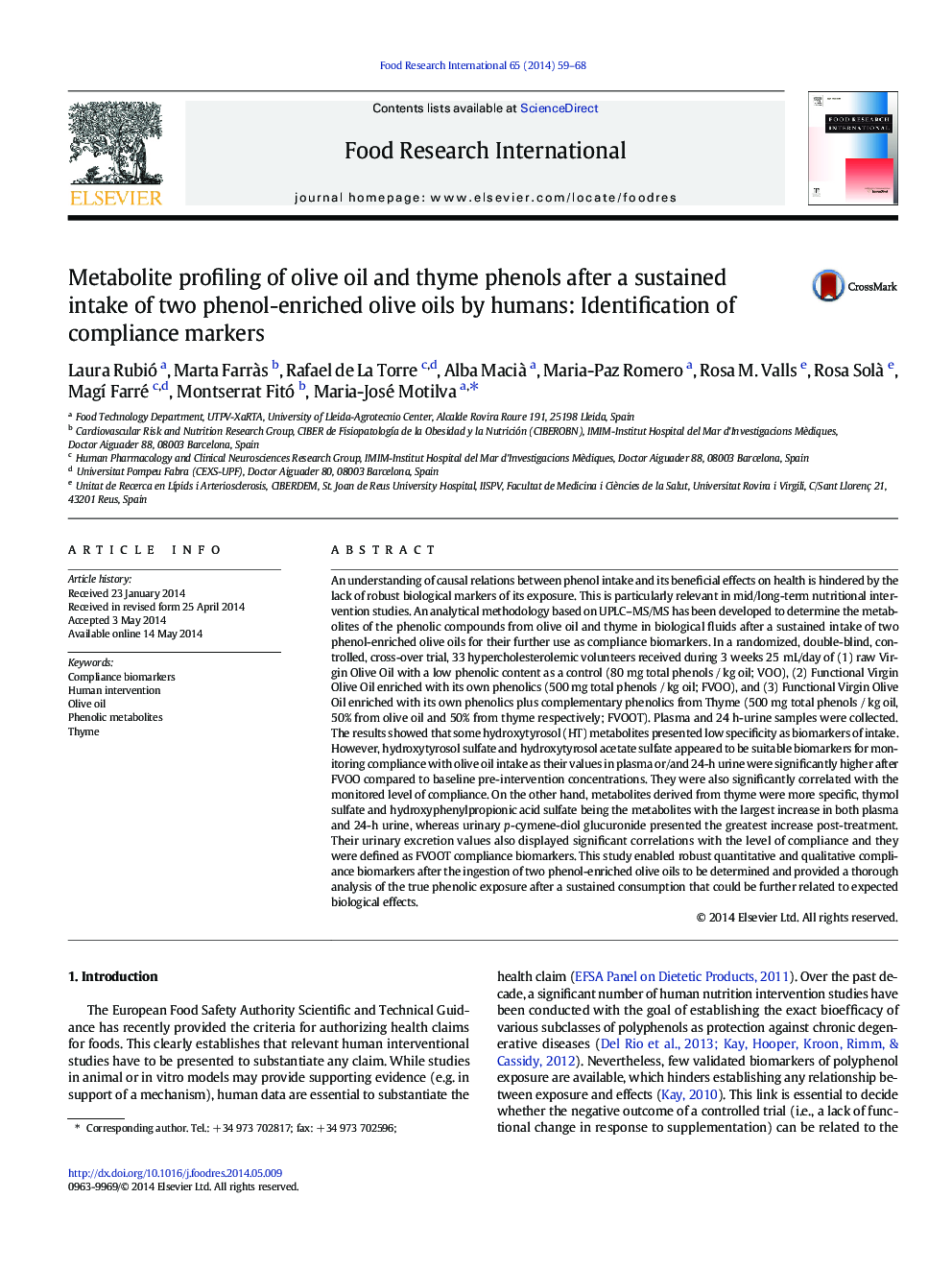| کد مقاله | کد نشریه | سال انتشار | مقاله انگلیسی | نسخه تمام متن |
|---|---|---|---|---|
| 4561645 | 1330666 | 2014 | 10 صفحه PDF | دانلود رایگان |
• A reliable approach for phenolic biomarker profiling in a sustained intake is proposed.
• Some hydroxytyrosol metabolites presented significant increase but low specificity.
• Phenolic metabolites derived from thyme were more specific and sensitive to change.
• Both olive and thyme phenol biomarkers had good correlations with the compliance.
• When olive phenolics were ingested with thyme, its bioavailability seemed to improve.
An understanding of causal relations between phenol intake and its beneficial effects on health is hindered by the lack of robust biological markers of its exposure. This is particularly relevant in mid/long-term nutritional intervention studies. An analytical methodology based on UPLC–MS/MS has been developed to determine the metabolites of the phenolic compounds from olive oil and thyme in biological fluids after a sustained intake of two phenol-enriched olive oils for their further use as compliance biomarkers. In a randomized, double-blind, controlled, cross-over trial, 33 hypercholesterolemic volunteers received during 3 weeks 25 mL/day of (1) raw Virgin Olive Oil with a low phenolic content as a control (80 mg total phenols / kg oil; VOO), (2) Functional Virgin Olive Oil enriched with its own phenolics (500 mg total phenols / kg oil; FVOO), and (3) Functional Virgin Olive Oil enriched with its own phenolics plus complementary phenolics from Thyme (500 mg total phenols / kg oil, 50% from olive oil and 50% from thyme respectively; FVOOT). Plasma and 24 h-urine samples were collected. The results showed that some hydroxytyrosol (HT) metabolites presented low specificity as biomarkers of intake. However, hydroxytyrosol sulfate and hydroxytyrosol acetate sulfate appeared to be suitable biomarkers for monitoring compliance with olive oil intake as their values in plasma or/and 24-h urine were significantly higher after FVOO compared to baseline pre-intervention concentrations. They were also significantly correlated with the monitored level of compliance. On the other hand, metabolites derived from thyme were more specific, thymol sulfate and hydroxyphenylpropionic acid sulfate being the metabolites with the largest increase in both plasma and 24-h urine, whereas urinary p-cymene-diol glucuronide presented the greatest increase post-treatment. Their urinary excretion values also displayed significant correlations with the level of compliance and they were defined as FVOOT compliance biomarkers. This study enabled robust quantitative and qualitative compliance biomarkers after the ingestion of two phenol-enriched olive oils to be determined and provided a thorough analysis of the true phenolic exposure after a sustained consumption that could be further related to expected biological effects.
Journal: Food Research International - Volume 65, Part A, November 2014, Pages 59–68
